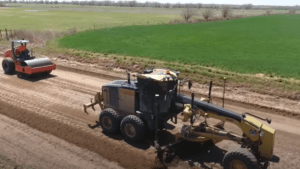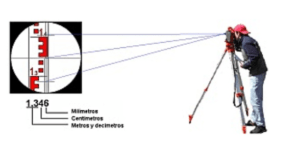All civil engineering structures, be they buildings, dams, bridges, etc., are built on the soil. The foundation is needed to transfer the load of the structure to a large area of ground. The structure’s foundation must be designed so that it does not cut the soil under it or settle the structure excessively. The traditional foundation design method is based on the concept of the bearing capacity of soil.
What is bearing capacity of soil?
The bearing capacity of soil is the ability of soil to support the load applied to the ground. The soil’s bearing capacity is the maximum average contact pressure between the foundation and the soil, and it shall not cause shear damage in the soil.
When the soil is compacted with the load, the soil is often deformed. Soil deformation resistance depends on water content, bulk density, internal angle of friction, and load application to the soil. The maximum load per unit area that soil or rock can withstand without yielding or displacing is called the bearing capacity of soil.
Types of bearing capacity
There are three types of bearing capacity,
- Ultimate bearing capacity
- Safe bearing capacity
- Allowable bearing capacity
Ultimate bearing capacity
Ultimate bearing capacity of soil is that any soil can handle without shear failure or excessive structural settlement.
Safe Bearing Capacity
The maximum pressure the soil can withstand is called the safe soil bearing capacity. This value is used for the basic design. This value can be obtained by dividing the final bearing capacity by the appropriate safety factor. Generally, the safety factor is kept between 3 and 5.
Allowable Bearing Capacity
It is the net load force, including the additional pressure on the foundation, according to which the soil will not break due to the breaking of the shear and will not cause excessive leveling of the foundation.
However, bearing pressure was not taken into account in the design. In general, in the event of uncertainty and unknown factors, always use a good safety factor.
Importance of Bearing Capacity
Soil bearing capacity plays a crucial role in determining whether a particular soil can support the structure’s load.
If a building is being built and the soil cannot withstand the load, the building will destabilize, causing cracks and damage. Therefore, to overcome this footing, it was designed accordingly to withstand the load while preventing the structure’s damage.
Therefore, the design of the foundation depends on the bearing capacity of the soil.
Improvement of bearing capacity of soil
Depending on site conditions, the following techniques can be used to improve soil bearing capacity.
- Increasing depth of the foundation
- Draining the soil
- Compacting the soil
- Confining the soil
- Replacing the poor soil
- Using grouting material
- Stabilizing the soil with chemicals
Increasing Depth of Foundation
At deeper depths, the overload pressure on the ground will be higher. Therefore, the soil is compacted to a deeper depth. As a result, it shows a greater bearing capacity of soil.
It only applies to non-cohesive soils, such as sandy and gravel soils. If the subsoil becomes wetter with increasing depth, then this method of increasing the soil’s bearing capacity is not applicable.
This method’s use is limited because, with increasing depth, the foundation’s weight and cost also increase.
Draining The Soil
As the proportion of water in the soil increases, the bearing capacity decreases. On sandy soils, due to the presence of water content, the bearing capacity of soil may decrease by up to 50%.
Uncoherent soil (i.e., sand and gravel soil) can be drained by laying the perforated tube flat on the slope, laying on the sand, and then filling the trench over the tube with loose rock. These trenches should lead to the nearest well or any water.
Compacting The Soil
If we use suitable soil compacting methods, its density and shear strength will increase. The bearing capacity of soil has also increased. There are many ways to compact the soil on site. They are rarely mentioned below.
- By scattering broken stones, gravel, or sand, it is then pounding them into battle.
- Use a suitable cylinder to move at a specific speed according to the type of soil.
- Drive the motor to a concrete pile or wooden dowel, pull it up, and fill the hole with sand or concrete.
Also, Read! Soil Compaction! Different Factors Affects Soil Compaction
Confining The Soil
In this method, the soil is surrounded by sheet piles. Confined soil is compacted further for greater strength. This method is suitable for shallow foundations.
Replacing The Poor Soil
In this method, the poor soil is removed first, and then the voids are filled with high-quality materials (such as sand, stones, gravel, or any other solid material).
To do this, first, dig a foundation trench 1.5 m deep, and then fill a 30 cm step with solid material. Then the solids are compressed at each stage. This method of soil improvement is useful for foundations in black cotton soil.
Using Grouting Material
This method is suitable for soils with pores, cracks, or crevices under the foundation. In this method, the weak soil bearing layer is strengthened by injecting cement mortar under pressure as it will expand any cracks or pores, etc.
To properly distribute the slurry, it is necessary to make holes in the ground and insert perforated tubes for the filler.
Stabilizing The Soil With Chemicals
This method of improving the bearing capacity of soil is expensive and used in particular conditions.
In this way, chemical solutions (such as gaseous water and calcium chloride silicates) are injected into the soil under pressure. Chemicals and soil particles form a gel-like structure and form dense clumps.
It is called a chemical soil stabilizer and provides additional strength to loose soils at deeper depths.
Read Also: Soil Stabilization Methods and Materials used to improve soil





